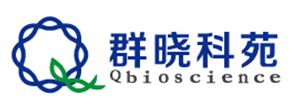博文
Science—个体化鸡尾酒疗法可望解决肿瘤的药物抗性难题
|||
大夫可能通过这种方式来解决肿瘤的药物抗性问题:经活体组织学检查获取患者自身肿瘤,经细胞培养,进而筛选能有效杀死所培养的肿瘤细胞的通过抗癌药物组合方式。
该结果在本月13号发表在science上。肿瘤基因组测序工作已获得了大量驱动肿瘤生长的基因突变,提供了药物治疗的潜在靶点。但是要开发出针对这些靶点的疗法,这条路却走的让人异常沮丧。一个貌似神奇的疗效往往在仅仅经过几个月后呈现出让人心碎的转变:很多肿瘤在药物应用之初有效,肿瘤快速萎缩,但很快复活,肿瘤再次如先前一样呈现出旺盛的生命力。
药物抗性是一个长期困惑着肿瘤研究人员的问题,包括来自波士顿麻省总医院的医生Jeffrey Engelman。为了更多的了解肿瘤如何产生抗性,他的研究团队设计了一种患者肺癌细胞的培养方法,并在此基础上用76种不同的抗癌药物组合来检测它们对培养肿瘤细胞的杀伤效果。
将药物联合应用对付那些产生药物抵抗的肿瘤细胞产生了意想不到的效果。加州大学个性化肿瘤治疗中心(Center for Personalized Cancer Therapy) Razelle Kurzrock主任说,她没有参与这项工作,“这种方法确实很有潜能,但它是否在病人体内依旧有作用?体内与体外细胞培养差别很大”。
正确的组合
细胞培养一直是肿瘤研究的一种重要方式,虽然细胞培养不能完全模拟体内肿瘤的生长状况,但它能满足诸如药物筛选等研究所需的大量肿瘤细胞样品。
但是,因所得组织过于细微,病人活检组织很难用于细胞培养获取可用于研究的肿瘤细胞。Engelman的团队集合了细胞培养技术领域的最新进展,成功实现对这些细胞在实验室的培养生长。他们团队用这一技术培养了已经产生药物抗性的20个肿瘤病人的癌细胞,然后通过单独或联合用药测试了这些肿瘤细胞对多达76种肿瘤药的敏感性。
对多数细胞而言,研究人员都能找到有效的药物组合方式。这种方法有时产生了意想不到的效果:例如,超过一半的对靶向ALK蛋白的药物产生抗性的细胞样品,使用针对SRC蛋白的药品来处理获得的效果很好,Engelman说:“没有遗传学结果曾经指向这种组合方式”。
一些人建议使用小鼠模型来模拟人类肿瘤,好几家公司具有将肿瘤从病人移植给小鼠的方法。但是Engelman认为细胞培养的方式更快,更方便用于药物筛选。
即便这种方法很成功,(也有很多缺点尚未克服),很多活检样品不能在实验室中成功培养,即便是能成功的样品,也需要六个月的时间才能达到用于药物敏感性筛选的量。Engelman说:“病人确实需要尽早知道如何处理他们的肿瘤才更有效”。他们正在努力缩短培养所需时间:“我们正在取得进展,我想我们能成功达到目的。”
上文来自Nature的评论
DOI: doi:10.1038/nature.2014.16334
Science原文链接:http://www.sciencemag.org/content/early/2014/11/12/science.1254721
文题:Patient-derived models of acquired resistance can identify effective drug combinations for cancer
通过源于患者的获得性药物抗性模型可确定有效的抗肿瘤药物组合形式
靶向性肿瘤治疗已能产生相当的临床效应,但是多数肿瘤发展为药物抗性。这里,我们描述了一种药物基因组学平台,这一平台便于快速确定可克服药物抗性的药物组合方式。我们建立了从肺癌活检样品中培养细胞的模型,这些肺癌细胞已经产生了对EGFR或ALK酪氨酸激酶抑制剂等药物的抗性,我们将这些细胞进行遗传学分析和药理学筛选,以此确定了多种有效杀伤它们的药物组合方式。例如,ALK和MEK抑制剂组合对已经发展出MAP2K1活化突变的ALK阳性抗性肿瘤有效,EGFR和FGFR抑制剂组合对出现了FGFR3抑制剂新突变的EGFR突变抗性的肿瘤有效。ALK和SRC抑制剂对几种ALK驱动病人的细胞有效,单纯遗传学分析并未预测到这一结果。经进一步精炼,这一策略将有助于患病个体的直接药物治疗策略的选择。
Personalized cocktails vanquish resistant cancers
Tailored approach uses cultured tumour samples to find effective drug combinations.
Doctors may be able to overcome drug resistance in cancer by growing cells from a patient's own tumour and then blasting the cells with an array of compounds to see which ones work.
A study published on 13 November in Science heralds this ultra-personalized future of cancer therapy. International efforts to sequence cancer genomes have yielded a weighty catalogue of mutations that drive tumour growth and provide tantalizing drug targets. But attempts to develop therapies that hit those targets have been frustrating: many of these drugs initially shrink tumours, but the cancer often resurges. A seemingly miraculous cure can give way to heartbreak in only a matter of months, with tumours growing back as vigorously as before.
It is a problem that has long dogged cancer researcher and physician Jeffrey Engelman of the Massachusetts General Hospital in Boston. To learn more about how cancer becomes resistant to therapy, Engelman and his colleagues devised a way to culture lung cancer cells from patient samples and then test those cells against a battery of 76 different drugs.
The results yielded unexpected and promising drug combinations for treating resistant cancers, but the approach has not yet been used to guide patient treatment, notes Razelle Kurzrock, director of the Center for Personalized Cancer Therapy at the University of California in San Diego, who was not involved with the work.
“The potential for the assay is really there,” she says. “But does it work in the patient? That’s a more difficult reality.”
Right combination
Cells grown in culture have long been a mainstay of cancer research. Although they do not perfectly mimic tumour growth in the body, they are amenable to studies requiring large numbers of samples, such as drug screening.
But patient biopsies are difficult to culture because they are often tiny, and yield few cancer cells to work with. Engelman’s team built on recent advances in cell-culture techniques to develop ways to coax these cells into growing in the laboratory. The team then used the technique to culture cells from 20 patients whose cancers had become resistant to therapy, and tested those cell lines for sensitivity to 76 cancer drugs, alone and in combinations.
For most of the cell lines, the researchers were able to find a cocktail that worked. The approach sometimes yielded unexpected results: for example, more than half of the cell samples that were resistant to therapies targeting a protein called ALK were felled by different drugs that inhibited another protein called SRC. “There were no genetic results that would have pointed to that combination,” says Engelman.
Others have proposed using mice to model human cancers, and several companies now offer the possibility of transplanting tumours from patients into mice to test treatments. But Engelman says that the cell-culture approach may be faster and more versatile for large drug screens.
Even so, many of the biopsies used in the study failed to yield enough cancer cells for culturing in the lab, and even those that did required up to six months before they were ready to be screened for drug sensitivity. “Our patients really need to know how to treat their cancers as soon as possible,” says Engelman, who is now working to reduce the culture time to a matter of weeks.
“We’re making good progress,” he adds. “I think we have a decent shot of getting there.”
Nature DOI: doi:10.1038/nature.2014.16334
http://www.sciencemag.org/content/early/2014/11/12/science.1254721
Patient-derived models of acquired resistance can identify effective drug combinations for cancer
Targeted cancer therapies have produced substantial clinical responses, but most tumors develop resistance to these drugs. Here, we describe a pharmacogenomic platform that facilitates rapid discovery of drug combinations that can overcome resistance. We established cell culture models derived from biopsy samples of lung cancer patients whose disease had progressed while on treatment with EGFR or ALK tyrosine kinase inhibitors and then subjected these cells to genetic analyses and a pharmacological screen. Multiple effective drug combinations were identified. For example, the combination of ALK and MEK inhibitors was active in an ALK-positive resistant tumor that had developed a MAP2K1 activating mutation, and the combination of EGFR and FGFR inhibitors was active in an EGFR mutant resistant cancer with a novel mutation in FGFR3. Combined ALK and SRC inhibition was effective in several ALK-driven patient-derived models, a result not predicted by genetic analysis alone. With further refinements, this strategy could help direct therapeutic choices for individual patients.
上文由群晓科苑翻译整理,科学推广,服务民众。他人或机构如需使用,请提供该原始链接地址。
北京群晓科苑生物技术有限公司主要经营生物医药领域的试剂、耗材和仪器。群晓生物致力于为用户提供优质的材料、技术和实验整体性解决方案,完美配合用户的科研创意和灵感。群晓生物立志把一流的产品、专业的技术和完善的售后服务献给广大用户。

北京群晓科苑生物技术有限公司
Tel: 010-84504282/64880108
https://blog.sciencenet.cn/blog-1991202-843782.html
下一篇:Science—囊泡定向运到高尔基体的奥秘藏于卷曲螺旋蛋白golgin上
全部作者的其他最新博文
全部精选博文导读
相关博文
- • Discovering the Theory of Relativity: As an Infant(初学者版)
- • Discovering The Law of Gravity: As an Infant(初学者版)
- • Discovering Pythagoras\´ Theorem: As an Infant(初学者版)
- • Discovering Shannon\´s Entropy: As an Infant(初学者版)
- • Discovering the Schrödinger Equation: As an Infant(初学者版)
- • Discovering the Second Law of Thermodynamics(初学者版)